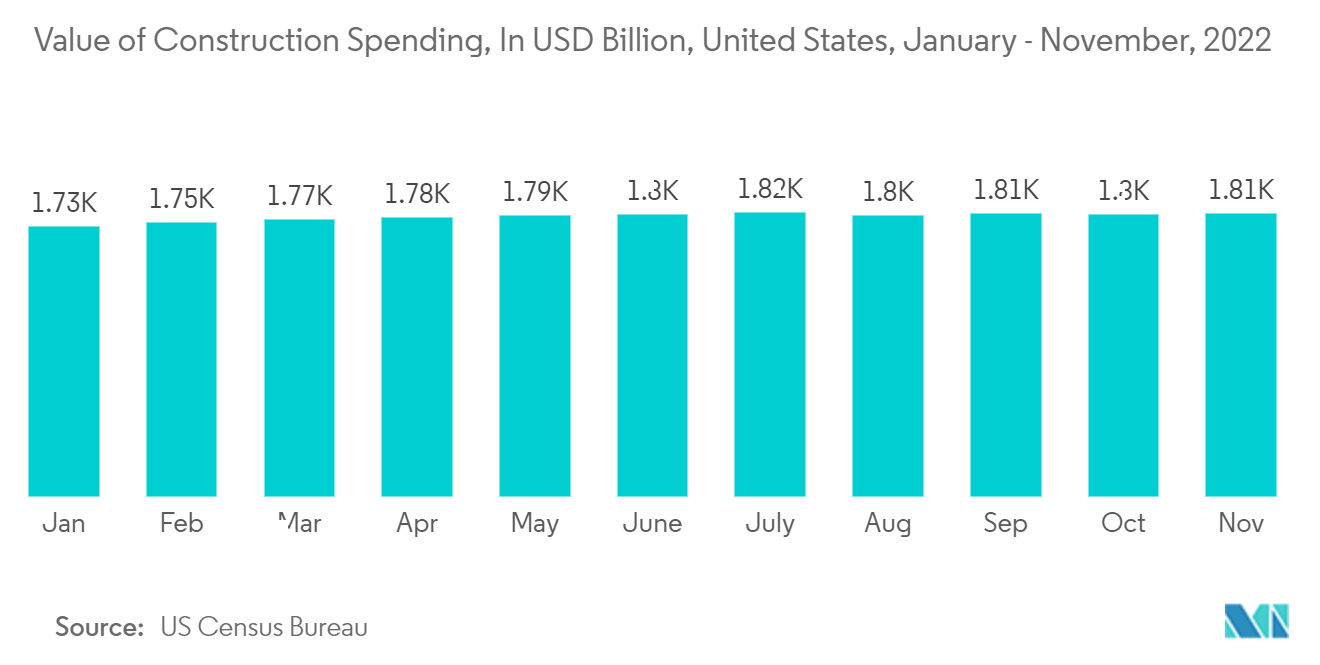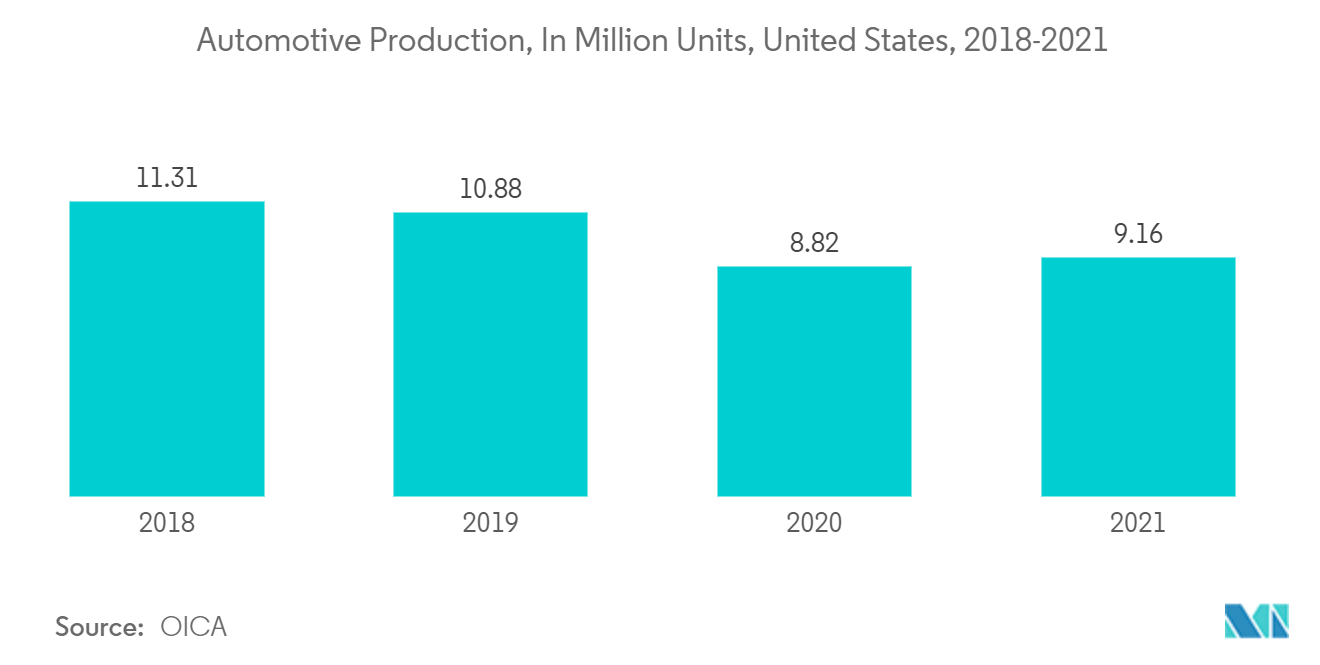Market Trends of North America Polyvinyl Chloride (PVC) Industry
Growing Demand from the Construction Industry
- PVC pipes have been used in building and construction for over 60 years, as they offer valuable energy savings during production, low-cost distribution, and a safe, maintenance-free lifetime of service. These pipes are widely used for pipeline systems for water, waste, and drainage as they suffer no buildup, scaling, corrosion, or pitting, and they provide smooth surfaces, reducing the energy requirements for pumping.
- PVC flooring has several benefits, such as durability, freedom of aesthetic effects, ease of installation, ease of cleaning, recyclability, etc. Thus, its flooring has been used over the years. Another area in the building and construction industry where PVC is used is in roofing. It is used mainly due to its low maintenance requirements, as it lasts for more than 30 years.
- In the North American region, the construction industry is expected to witness moderate growth, supported by single-family roads and bridges and institutional construction in the coming years. In the United States, the southern and western regions are the key regions for growth, with Nevada, Texas, and New Mexico leading the growth prospects. In Canada, the overall construction industry is expected to resume its growth during the forecast period, supported by a rebound in non-building construction.
- The United States has a major share in the construction industry in North America. Apart from the United States, Canada and Mexico are also contributing significantly to the construction sector's investments. According to the US Census Bureau, during November 2022, construction spending in the United States was estimated at a seasonally adjusted annual rate of USD 1,807.5 billion, 0.2% more than the revised October estimate of USD billion.
- In Canada, various government projects, including the Affordable Housing Initiative (AHI), the New Building Canada Plan (NBCP), and Made in Canada, are set to support the expansion of the sector hugely. Additionally, as part of the "Investing in Canada Plan," the government has announced plans to invest nearly USD 140 billion in infrastructure developments in the country by 2028.
- The building and construction sector is the backbone of the Mexican economy. Over the last five decades, Mexico has urbanized faster than the majority of OECD (Organization for Economic Co-operation and Development) countries. Further, in Mexico, the Programa De Vivienda Social, or social housing program, had a budget increase of 179% to USD 200 million in 2021, thus supporting the construction spending. Moreover, the easy loan facilities and favorable mortgage schemes are expected to benefit residential construction in the country.
- Over the next few years, the construction and building industry is likely to need more polyvinyl chloride because of all of the above reasons.

The United States to Dominate the Market Growth
The United States has one of North America's largest construction industries. According to the United States Census Bureau, the annual value of new construction put in place in the United States accounted for USD 1,626,444 million in 2021, compared to USD 1,499,570 million in 2020.
- Furthermore, non-residential construction in the United States reached USD 930,135 million in November 2022, which is an increase of 11.79 percent over November 2021, according to U.S. Census Bureau statistics.
- Because of its lightweight, polyvinyl chloride (PVC) is widely used in the automotive industry.PVC has good flexibility, thermal stability, fire resistance, and high gloss. PVC can be molded into various flexible and rigid products and supports extrusion, injection molding, compression molding, and blow molding. The United States is the second-largest automotive manufacturer after China. In 2021, the country produced 9.16 million units, an increase of 3.8% compared to 8.8 million units in 2020.
- However, the United States is the second-largest market for electric vehicles. In the United States, according to the EV Revenues, in 2021, the country's total plug-in vehicle registrations accounted for around 6,56,900 units, registering a growth rate of 100% compared to 2020. In July 2022, 63,366 hybrid electric vehicles (HEVs) were sold in the United States, registering a decline rate of 14.7% from sales in July 2021.
- During the forecast period, all of the above factors are expected to have a big effect on the market that was looked at.


